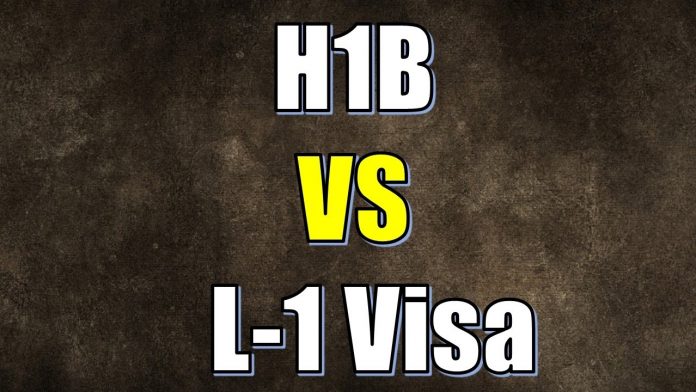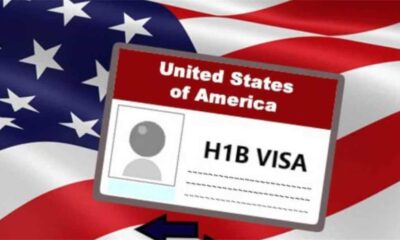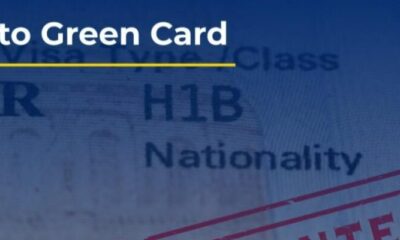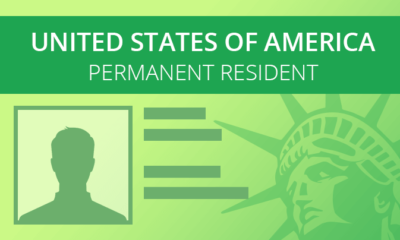Visa
Differences And Similarities Between L1 Visa And H1B Visa

The L1 and H1B visas are the most sought-after US work visas. Visa applications, especially American work visas, are a bureaucratic roller coaster, yet hundreds of individuals apply each year with dreams of a better future.
This article compares the L1 and H1B visas to help you choose.
Difference Between the L1 vs H1B Visa
The main difference between the H1B and L1 visa is:
- You can apply for an H1B Visa if you will work for an American employer and American-based company.
- You can apply for an L1 Visa if you will work for a multinational company, in a lead or key position. In other words, you will transfer to the US branch of an overseas company in which you have been employed previously.
See a side-by-side comparison between the H1B and L1 visas:
1. Who can apply?
L1 Visa
- A Manager or Executive or Specialized Knowledge Professional (such as a Lawyer, Doctor, Engineer, etc).
H1B Visa
- Individuals in “Specialty Occupations”, such as IT Specialist, Architects, Accountants, Doctors, Lawyers, etc.
2. Employment requirements
L1 Visa
- You must be transferring to the US from a US company’s foreign branch office (parent or subsidiary). This means you can earn your salary from either an overseas or US-based company.
H1B Visa
- You must fill a vacant position in a US company that could not be filled by an American citizen and be highly competent for the role. Your salary will be paid by the company you work for in the United States.
3. Previous work qualifications
L1 Visa
- You must have worked (in one of the qualifying position) for at least one year in the last three years in the overseas branch of the company you are transferring to.
H1B Visa
- You do not necessarily need to have previous work experience in the position you are applying for.
4. Academic qualifications
L1 Visa
- There are no required academic qualifications to get an L1 Visa.
H1B Visa
- You must have at least a Bachelor Degree or equivalent or have advanced training or vocational skills to qualify for the H1B Visa.
5. Approval from the US Department of Labor (Proving there were no American citizens suited for the job)
L1 Visa
- The L1 Visa does not require approval from the US Department of Labor. In other words, your employer doesn’t have to prove to the DOL that no American citizens were qualified for the position.
H1B Visa
- Before you get an H1B visa, your employer must show that they had an open application and that there were no competent workers in the US to fill the post. Your employer accomplishes this by requesting approval from the US Department of Labor (DOL). Following that, the employer can apply to the USCIS for your H1B Visa.
6. Change of employer
L1 Visa
- L1 visa holders are not permitted to change employers. However, you may change your visa status, such as to an H1B visa.
H1B Visa
- H1B Visa holders can change employers and transfer companies. The new employer (aka sponsor) has to file a new visa petition to the USCIS.
7. Family members
L1 Visa
- While working in the US, you can bring your spouse and unmarried children under 21 with an L1 Visa. Your family members need to get L2 visas.
- They can study and apply for an Employment Authorization Document (EAD) to work.
H1B Visa
- With an H1B Visa, you can also bring your spouse and unmarried children under the age of 21 with you to the US.
Your family members have to get an H4 Visa. - They can study and live in the US, but if they want to work they have to apply for an Employment Authorization Document (EAD).
8. Salary requirements
L1 Visa
- There are no exact salary requirements for the L1 Visa, other than it must not be low.
H1B Visa
- H1B Visa holders have to receive the same salary as other workers in that profession or the average salary for that position in the US.
9. Duration of the visa
L1 Visa
- The Visa is issued in accordance with your work contract.
H1B Visa
- The H1B visa is initially valid for 3 years but can extend for another 3 years.
10. Visa extensions
L1 Visa
- An L1 visa can be extended for a maximum of 7 years if you work as a Manager or Executive, or for a maximum of 5 years if you work as Specialized Knowledge staff.
- After your visa expires, you can apply to change your immigration status/switch to another immigration route.
H1B Visa
- You can extend an H1B Visa for a maximum of 6 years. After the Visa expires, you can apply for an Employment-Based Green Card, as long as you have a qualifying job.
11. Green Card
L1 Visa
- Yes, you can eventually obtain a US Green Card with an L1 Visa by filing an adjustment of resident status application with the USCIS. This means you can ask your employer in the United States to sponsor you for a PERM (Permanent Labor) certificate.
H1B Visa
- With an H1B you can also apply for a Green Card after the visa expires. Your employer has to sponsor you for a PERM Certificate.
12. Quota (Cap)
L1 Visa
- There is no annual quota or cap of how many L1 Visas are issued.
H1B Visa
- The annual quota/cap for H1B visas is 85,000. 65,000 are allocated to foreign specialist workers, while another 20,000 are allocated to international graduates with advanced degrees from US educational institutions.
H1B Visa in a Nutshell
Also known as the “Person in Specialty Occupation Visa”, you can apply for the H1B Visa if you received a job offer in a US company, and you fulfil the following requirements:
- You have at least a 4-Year Bachelor degree or higher (Masters degree, PhD)
- You have advanced training or vocational skills
- You qualify to work in a research and development project for the US Department of Defense or another government position.
- You are not occupying the position of a qualified worker who is already in the US
Qualifying fields of employment for the H1B Visa include:
- IT.
- Architecture.
- Engineering.
- Accounting.
- Mathematics.
- Science.
- Medicine.
L1 Visa in a Nutshell
Workers transferring to a company’s US office receive the L1 Visa (Work Visa for Intracompany Transferees). The US company may be a branch or subsidiary of an overseas company.
High-standing positions such as Managers, executives, and essential employees are those that transfer. L1 Visas have two types:
- L1A Visa – Manager and Executive positions.
- L1B Visa – Specialized Knowledge staff.
L1A Visa (Manager position) requirements:
- You must be in charge of the company or a division of the company.
- You must have the authority to hire new employees, or at least recommend people for hire.
- You must be in a position over the supervisors and lower-level employees of the organization.
L1A Visa (Executive position) requirements:
- You must be authorized to enforce policy rules and regulations for the company
- You must be supervised only by the stakeholders or a board of directors.
- Apart from stakeholders or a board of directors, you have the power to make decisions in regards to the company.
L1B Visa (Specialized Knowledge staff) requirements
Although it is a more vague term, Specialized Knowledge staff eligible for an L1B Visa includes essential employees in a company who:
- Have distinctive and unique knowledge of the company’s services, products, management, etc.
- Cannot be easily replaced by someone who has a similar work experience.
- Qualifying positions include doctors and surgeons in a hospital, engineers, lawyers, professors, etc.






















